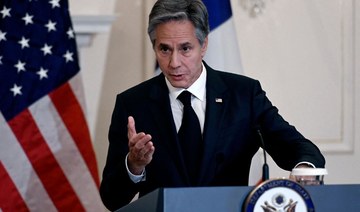OTTAWA: Russia’s use of Iranian drones in Ukraine is “appalling,” US Secretary of State Antony Blinken said Thursday, adding that the United States and allies would seek to block such shipments.
Russia has used the drones to “kill Ukrainian civilians and destroy the infrastructure they rely on for electricity, for water, for heat. It’s appalling,” Blinken said during a visit to Ottawa.
“Canada and the United States will keep working with our allies and partners to expose, to deter and to counter Iran’s provision of these weapons,” he vowed.
Kyiv and its Western allies have repeatedly accused Moscow of using Iranian-made drones in attacks on Ukraine in recent weeks.
Ukraine has said around 400 Iranian drones have already been used against the civilian population of Ukraine, and Moscow has ordered around 2,000.
Tehran has rejected the allegation, its Foreign Minister Hossein Amir-Abdollahian saying this week: “We have not supplied Russia with any weapons or drones for use in the war against Ukraine.”
“If... it becomes clear to us that Russia has used Iranian drones in the war against Ukraine, we will definitely not be indifferent about this issue,” he added.
The United States, alongside Britain and the European Union, have already imposed sanctions on Iran over the issue of drones.
Last month, Kyiv decided to significantly reduce its diplomatic relations with Tehran over alleged arms deliveries to Moscow.
Russia’s use of Iranian drones in Ukraine ‘appalling’: Blinken
Short Url
https://arab.news/jwgmq
Russia’s use of Iranian drones in Ukraine ‘appalling’: Blinken

- "Canada and the United States will keep working with our allies and partners to expose, to deter and to counter Iran's provision of these weapons," Blinken vowed
- Kyiv and its Western allies have repeatedly accused Moscow of using Iranian-made drones in attacks on Ukraine















